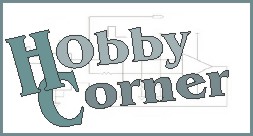|
 |
DiscoverCircuits.com -- Hobby Corner
Last Updated on:
Tuesday, June 01, 2021 03:06 PM
Hobby Circuits List
The contents &
graphics of Discovercircuits.com are copyright protected.
LINK to Dave's circuit, but DO NOT COPY any files to your WEB
SITE server |
|
|
|
|
More
Timer Circuits, Camera
Circuits |
|
Camera
Shutter Time Measurement -- August 14, 2011 |
Camera Shutter Time Measurement
A while back I received an email from someone who needed a simple way to measure the
speed of a photographic camera. I thought about this and suggested the method
below. It relies on an oscilloscope and a cheap photodiode to measure the
speed. |
|
|
|
The illustration below depicts how
this speed measurement is set up. A photodiode with a 1K resistor wired in
parallel is positioned in the photographic camera’s film plane. A bright
incandescent lamp is placed in front of the camera lens. When the camera shutter
opens and closes, a voltage pulse is produced by the photodiode, which can easily be
observed on the oscilloscope screen. The width of the pulse is the camera shutter
speed. By adjusting the scope’s sweep speed, pulses ranging from milliseconds to
seconds can be measured. |
|
|
|
I would suggest a BPW34 photodiode
made by Osram. The 1K load resistor should be about right, so the DC component
from ambient light will be small, relative to the light hitting the photodiode when the
shutter is open. The light hitting the photodiode generates a current proportional
to the light intensity. The 1K load resistor converts the current into a voltage.
A bright flashlight is all that is needed as a light source. Make sure that the
flashlight is an incandescent type, since this type of light will be more easily
detected by the photodiode. |
|
|
|
With a careful adjustment of the
scope’s trigger setting, you can capture both fast and slow shutter speeds. I
would recommend a “normal” scope trigger setting with a positive slope. In this mode,
the scope screen will be blank and the trace will not start until the photodiode sees
light from the flashlight through the lens and shutter. The end of the pulse will be
seen as a negative slope. |
|
|
|
|
|
|